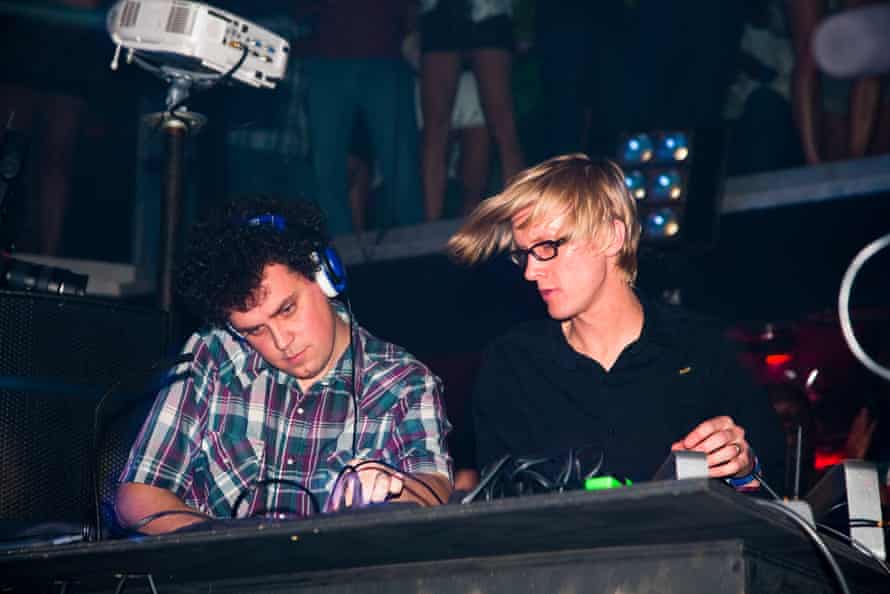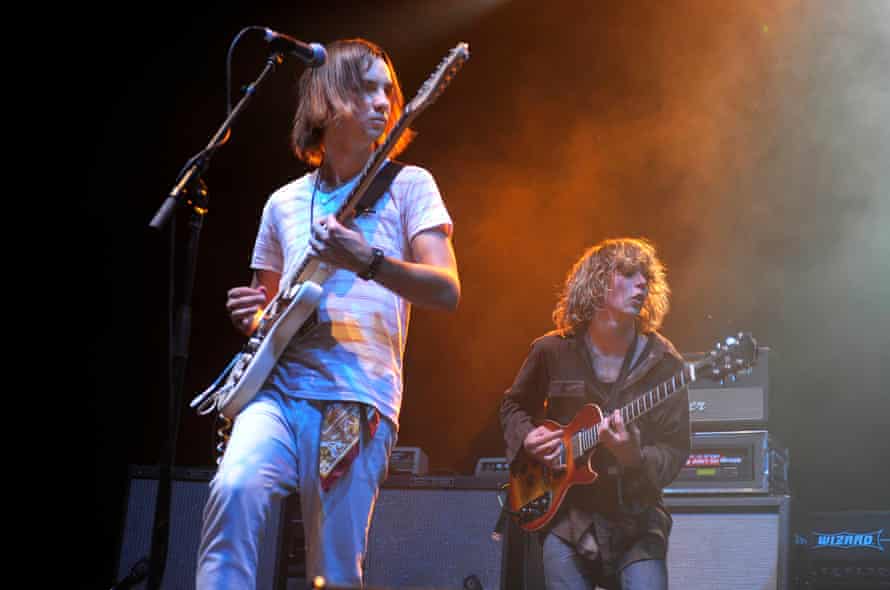In the mid-2000s, a party ruled Kings Cross in Sydney. His name was Bang Gang, and co-founder Jamie Wirth remembers it well.
“Oh my God, that was wild. It was just fucking chaos, ”Wirth recalls. “There was a little bit of freaking out, a lot of kisses, it was pretty exciting. It was wild and colorful, and it felt like everyone was partying for their lives. But it was also a celebration of this new form of music: it was exciting, and it was coming out every week.
This new form of music – a mostly electronic mix of songs released between around 2005 and 2011 by artists like Justice, Uffie, Simian Mobile Disco and Erol Alkan – has more recently been dubbed “bloghouse”. But if you don’t know it by that name, or even what it sounded like, you probably know what it is. look at Like. Bloghouse was also the era of celebrity party photographer, Vice Dos and Don’ts, American Apparel disco pants, exquisitely decorated MySpace profiles, hipster runoff and Kanye West in shades of shutters. If the names Cobra snake or Cory Kennedy means something to you, you were probably there for it. (And if you weren’t, wait – the aesthetic of that era, dubbed “sleazy indie”By a viral TikTok video, looks set for a comeback.)

What a Unified Bloghouse wasn’t cohesive sound but how you found the music: on music blogs like GottaDanceDirty, Music for Robots and Fluokids. The rise of the home internet meant that low-quality MP3s could be streamed on the fly by artists, creating an ever-growing treasure trove of new tracks, remixes, and mash-ups. The DJs at parties like Bang Gang would play the best new stuff of the week, but you can also just download them for free to your desktop. This marked an important micro-revolution for music.
“It was the first time that music gained momentum on the Internet rather than in clubs, in the record store or on the radio”, explains Lina Abascal, the author of a new book, Never be alone again: how Bloghouse united the internet and the dance floor, which documents this brief but transformative moment.
She wanted to explore how the “perfect storm” of changes – in technology, the Internet, and the music industry – facilitated blogging and other cultural changes. Abascal sees the bloghouse – which sounded “no rules” and only cared about having fun – as a reaction to the serious iterations of rock and electronic music that came before it. Produced largely away from the majors, by producers giving away their music for free and bloggers talking about it as a passion project, it was not concerned with monetization. Bloghouse was more than songs, explains Abascal; it was “a cultural moment, with music coming out”.

Bloghouse has also been a boom time for Australian artists. The new ability to distribute songs online meant that local music could easily be discovered abroad, without the financial backing of a big label: just download the track and go. “Suddenly the distance between Paris and Sydney or LA and Melbourne clicked,” says Abascal. “It was a first time.”
Australia, alongside France and the United States, has become a major player in the bloghouse. Bands such as Van She, the Presets, Ladyhawke, Midnight Juggernauts, Pnau, Cut Copy and Bag Raiders found followers overseas and became a tight-knit community at home (so Australia was synonymous with the era when Never Be Alone Again described the bloghouse sound as “pretty much any band of three to four Australians with v-necks and a synth keyboard”). A then healthy nightlife industry also helped: Van She, for example, met at Bang Gang and signed after Modular Recordings founder Stephen Pavlovic saw them perform there.

Modular led the scene locally, even recruiting a young Tame Impala in 2008. yell you a beer? Because they didn’t have any money. They were 18, ”says Wirth.
Michael Di Francesco, who played in electropop group Van She, says the internet has helped break his band overseas. But he saw both good and bad in the constant flow of new music.
“What was amazing from a music producer’s point of view is that we could finish something on a Friday afternoon and then we could play in the club that night,” he explains. “Or you could finish something, it would be on the internet the next day and people would already know that because they were checking blogs to see what the last thing was. So that made things a lot faster – but it also made it things a lot more disposable, because that’s when a lot more music started to come out. “

However, all was not rosy in the underground. “Bloghouse definitely lacked diversity – racially and in terms of gender,” says Abascal. “Of course, some barriers were broken with the Internet, but there was still some control. It’s no coincidence that so many bloggers were men, so many of the best artists, so many label managers, were men.
But just as technological changes allowed the bloghouse to flourish, new advancements began to kill it. Record companies began ordering the removal of illegal MP3s and Spotify took hold, ending the days of digital music consumption in the Old West. The traveling photographer was gradually sacked by the ubiquity of iPhones, and the small parties that had favored sound were replaced by corporate festivals. Sonically, this gave way to EDM, a mainstream moment for dance music that had nothing to do with bloghouse DIY ethics. “Bloghouse created this model of how to market the electronic music that ‘man’ took and ran with,” says Abascal.

Only 10 years later, much of the content of the time has already been lost, as the blogs that built and documented it have been phased out. Some of the most beloved tracks of the time were unofficial remixes or contained unapproved samples, meaning they never made it to streaming services. This impermanence is what motivated Abascal to archive bloghouse: “I wanted to create long-lasting work that honors this era,” she says.
And the era is fondly carried on in the memories of those who were there for her. “When things get so important, they have to run out, I think,” says Wirth. “But in terms of the turboness of fun and the strength of the community, I haven’t been a part of anything like this since.”




